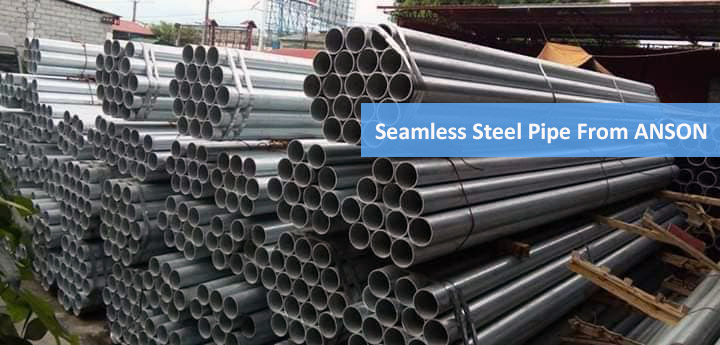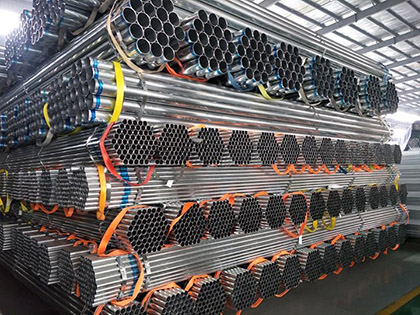
Various Seamless Steel Pipe Production Methods:
According to different production methods, seamless steel pipe can be divided into hot rolled pipe, cold rolled pipe, cold drawn pipe and extruded pipe.
Hot-rolled seamless pipes are generally produced on automatic rolling mills. The solid tube billet is inspected and the surface defects are removed, cut into the required length, centered on the end face of the perforated end of the tube billet, then sent to a heating furnace for heating and perforated on the punching machine. At the same time, the perforation is continuously rotated and advanced. Under the action of the roll and the head, a cavity is gradually formed inside the tube billet, which is called a capillary tube. Then send it to the automatic pipe rolling machine to continue rolling. Finally, use machine to achieve uniform in wall thickness, and the sizing machine is sizing to meet the diameter specification. Among all methods, hot-rolled seamless steel tubes by continuous rolling mills is a more advanced method.


If you want to produce seamless pipes of smaller size and better quality, you must use cold rolling, cold drawing or a combination of the two. Cold rolling is usually carried out on a two-roll mill in which the steel pipe is rolled in an annular hole type composed of a variable-section circular hole groove and a stationary tapered head. Cold drawing is usually carried out on a single-chain or double-chain cold drawing machine of 0.5 to 100T.
Extrusion method The tube round billet to be heated is placed in a closed extrusion cylinder, and the perforated rod moves together with the extrusion rod to extrude the extrusion from the smaller mold hole. This method can produce steel pipes with smaller diameters.
Seamless Steel Pipe Raw Material - Round Billet
The continuous casting method produces round billets mainly for the production of seamless steel tubes of different calibers. The round billet perforation relies on two inclined rollers to rotate the round billet, and advances the perforation toward the head end mounted on the end of the mandrel. The perforated inner surface becomes the inner wall of the steel pipe, which is a very harsh processing method. The requirements for round billet quality are:
- Good center density and low magnification structure of the round billet. If there is looseness or crack in the center of the round billet, crack marks will be left on the inner surface of the tube wall; the density of the loose area is different from the density at the surface (such as 0.003~0.005g/cm3), and the internal cracked waste will be produced when the tube is worn.
- The round billet should have a good surface quality. If there is a skin pinhole or slag inclusion, tearing is likely to occur when the pipe is worn, and cracks are formed through the surface.
- Round billet purity. The inclusions within 13 mm of the round billet and the inclusion of large internal particles are the main cause of crack defects in the pipe. The inclusions in the slab were < 0.035%, and the waste was significantly reduced.
- When the internal crack of the round billet is serious, the pipe can not be welded.
- Ellipticity of the round billet. Uneven shrinkage of the shell caused by uneven cooling is easy to produce elliptical deformation.
Unlike the square billet crystallizer, the round billet crystallizer has no pre-solidification of the corners, which maintains uniform cooling of the crystallizer and the secondary cooling zone, so that the shell shrinks uniformly to prevent ellipses and surface cracks. For a given billet size, the circular crystallizer has a smaller heated area than the billet and therefore has a lower pulling speed. In order to ensure the quality of round billet, effective techniques for slab continuous casting (such as full-process protective casting, large-capacity tundish, secondary cooling control cooling, liquid level automatic control, electromagnetic stirring, etc.) are used in round billet continuous casting.


